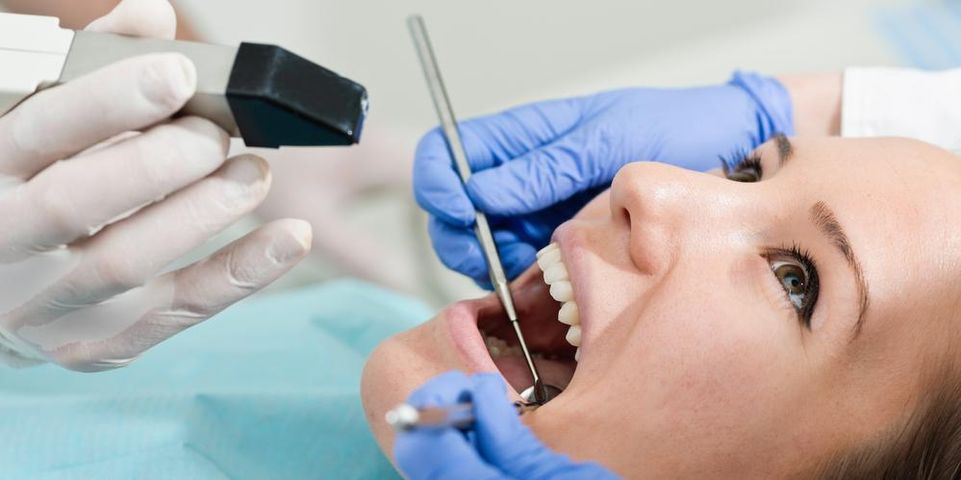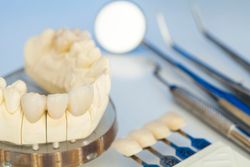
Dental restoration refers to any time your dentist needs to replace either missing teeth or parts of the tooth itself. This type of damage can be the result of a fracture or decay, but thanks to advanced dental services, there’s no need to live with missing or broken teeth. Your dentist will evaluate the damage and then recommend one of two types of dental restoration.
Direct Restoration
Direct restoration can be a simple procedure that usually requires only one dentist visit. Direct restoration is when a filling is injected directly to the tooth cavity The fillers can vary, from composite resin to silver, and the one your dentist recommends will depend on where in your mouth the damage is and what kind of pressure that spot needs to withstand. For instance, gold is an expensive filling material, but has an extremely long durability, since it doesn’t corrode. Silver amalgams are more affordable and can last just as long, but they have a higher risk of cracking. Both silver and gold are recommended for more significant spots of decay that need to withstand chewing pressure. Composite resin is popular because it blends in more with the natural look of teeth, but it wears out much faster than gold or silver, and will likely need to be replaced every five years or so.
After you receive your fillings, it is common to experience sensitivity for the next few weeks, but it should resolve on its own. If you got a silver or gold filling, you might want to avoid hot or cold drinks and solid foods for about 24 hours. You should never touch or poke at your filling. If you feel any sharp pain, go back to your dentist as soon as possible, as the filling may need to be reshaped.
Indirect Restoration
 Indirect restoration refers to the use of customized tooth replacements, like crowns or bridges.
Indirect restoration refers to the use of customized tooth replacements, like crowns or bridges.
A crown is a cap placed over the tooth to give it proper shape and size. Your dentist will drill out any decay in the tooth and remove the filling to create space for the crown. They will then make an impression to create the permanent crown and put a temporary one on to protect your tooth in the meantime. You can get a crown made from composite resin, porcelain, or metal, depending on how much you want to spend. It usually takes a lab about ten days to manufacture a crown. After you have a crown installed, you should avoid eating particularly hard foods, like hard candies or nuts, which can be destructive to your new crown.
Bridges are custom built to fill in the gaps of missing teeth and are anchored in the mouth with crowns. There are three main types of bridges: traditional, where the false teeth are anchored by crowns, cantilever, which is used when there is a tooth only on one side of the gap, and a resin-bonded bridge, which is commonly used for front teeth. Your dentist will decide which teeth are going to be anchors and reshape these teeth to fit the crowns. On your second visit, the permanent bridge will be fitted, and then, after a few weeks to make any adjustments, it will be cemented in. Recovery time is fast, and most bridges last up to seven years before needing to be replaced.
Nelson Hatanaka, D.D.S., is a premier dental provider based in Honolulu, HI, where he was named Top Hawaii Dentist in 2010 by Honolulu Magazine. Offering extensive dental services in both general and pediatric dentistry, Dr. Hatanaka provides complete individualized care, from simple dental cleanings to serious dental emergencies. For more information, call (808) 395-1922 or visit his website to schedule an appointment.
About the Business
Have a question? Ask the experts!
Send your question

